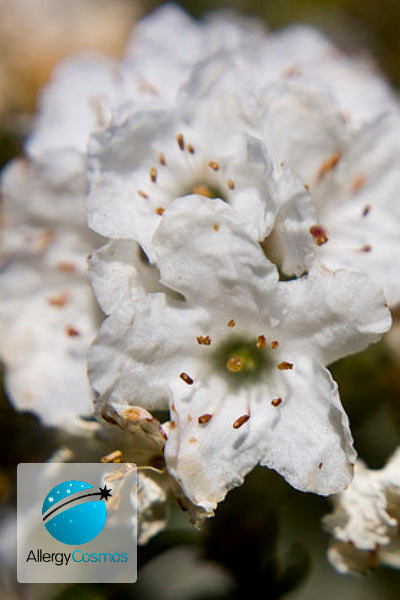Is there any truth to the connection between allergies and the exclusive planting of male trees over female trees?
Pollen is produced by the male parts of a plant and contains potent allergens which can cause hay fever (also known as seasonal allergic rhinitis) in some people. The symptoms of hay fever include a runny nose, blocked nose and sneezing. Bouts of hay fever can seriously interfere with work, study and social life, so it might be good to watch your local pollen count. You can be allergic to tree pollen, grass pollen and weed pollen. However, some plants produce far more pollen than others.
When it comes to plants, it is important to be aware that they fall into three different botanical categories, each with a different pollen-producing potential:
Perfectly flowered plants contain the male parts (stamens) within the flower. Their pollen is heavy and sticky and generally dispersed by birds or insects, like bees, rather than being dispersed by the wind. Pollen from such trees is less likely to be airborne and therefore less likely to cause hay fever.
Monoecious plants have both male and female flowers while dioecious plants have either male or female flowers. Many kinds of grass, trees and shrubs are monoecious or dioecious. They create far more pollen than the perfectly flowered plant and this pollen is always dispersed by the wind. Therefore, such plants, including trees, are more likely to produce hay fever. The worst type of tree for allergies is the dioecious male (i.e. the ‘male tree’) because it bears only pollen, and has no fruit or seed.
In 1949, the United States Department of Agriculture recommended the planting of male trees in public parks and on the street because they are easier to keep tidy. This trend has been followed elsewhere. Thus, although the street may be tidier – no fallen fruit or seeds – the air itself is polluted with lots of invisible pollen grains, looking to stick to the mucous membranes of the noses and eyes of people with allergies.
This favouring of the male tree likely explains why hay fever, and other allergies, tend to be more common in the urban environment. Planting in the rural area is more likely to be ‘natural’ with a mix of plant types, many of which are not particularly allergenic. Although light pollen can travel a long way, 90% of tree pollen falls within 90 feet of the tree itself. Therefore, if you live on a tree-lined street, or near a park, then hay fever may be a problem. Since pollen is so light, it can easily get indoors – through the window, or on your clothes and hair.
So, what can you do to avoid tree pollen? You can check your local council’s tree planting policy – are they aware of the allergenic potential of male trees? Can you press for the planting of female cultivars? And if you are choosing trees or shrubs for your own garden, check with the nursery for low-allergen species. There is guidance at www.allergyfree-gardening.com.
Finally, the National Museum of Wales has produced a guide to hay fever plants, and highlights the following as being the most troublesome in the UK:
- Timothy grass
- Birch
- Nettles
- Ragweed
- Alder
- Hazel
- Horse Chestnut
- Mulberry
- Privet
- Fat Hen
- Broad-leaved Dock




